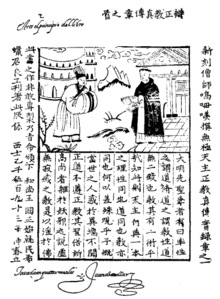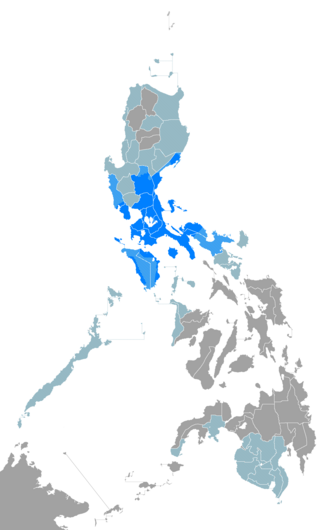
Tagalog is an Austronesian language spoken as a first language by the ethnic Tagalog people, who make up a quarter of the population of the Philippines, and as a second language by the majority. Its standardized form, officially named Filipino, is the national language of the Philippines, and is one of two official languages, alongside English.
Diego Aduarte OP was a Spanish Dominican friar and historian. He was a missionary to the Philippine Islands and arrived there in 1595 with Blancas de San Jose. In 1632 was made Prior of Manila. He died in 1636.
Baybayin is a Philippine script. The script is an abugida belonging to the family of the Brahmic scripts. Geographically, it was widely used in Luzon and other parts of the Philippines prior to and during the 16th and 17th centuries before being replaced by the Latin alphabet during the period of Spanish colonization. It was used in the Tagalog language and, to a lesser extent, Kapampangan-speaking areas; its use spread to the Ilocanos in the early 17th century. In the 19th and 20th centuries, baybayin survived and evolved into multiple forms—the Tagbanwa script of Palawan, and the Hanuno'o and Buhid scripts of Mindoro—and was used to create the constructed modern Kulitan script of the Kapampangan and the Ibalnan script of the Palawan people. Under the Unicode Standard and ISO 15924, the script is encoded as the Tagalog block.
Filipinoorthography Specifies the correct use of the writing system of the Filipino language, the national and co-official language of the Philippines.

Philippine Hokkien is a dialect of the Hokkien language of the Southern Min branch of the Sinitic family, primarily spoken vernacularly by Chinese Filipinos in the Philippines, where it serves as the local Chinese lingua franca, primarily spoken as an oral language, within the overseas Chinese community in the Philippines and acts as the heritage language of a majority of Chinese Filipinos. The use of Hokkien in the Philippines is influenced by Philippine Spanish, Filipino (Tagalog) and Philippine English. As a lingua franca of the overseas Chinese community in the Philippines, the minority of Cantonese-/Taishanese-descended Chinese Filipinos also uses Philippine Hokkien for business purposes due to its status as "the Chinoy business language" [sic].
Pedro de Betanzos was a Spanish Franciscan missionary and linguist.
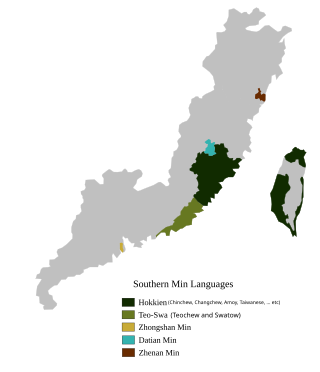
Hokkien is a variety of the Southern Min Chinese languages, native to and originating from the Minnan region, in the southeastern part of Fujian in southeastern mainland China. It is also referred to as Quanzhang, from the first characters of the urban centers of Quanzhou and Zhangzhou.
Pedro Ocharte was one of the first printers in the Americas, active from 1563 to 1592.
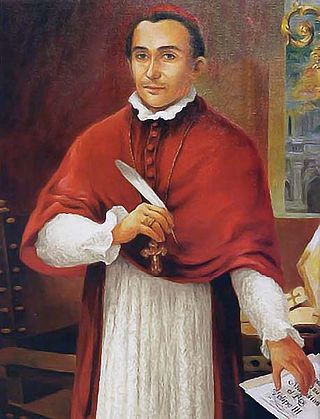
Miguel de Benavides y Añoza, O.P. was a Spanish clergyman and sinologist who was the third Archbishop of Manila. He previously served as the first Bishop of the Diocese of Nueva Segovia, and was the founder of the University of Santo Tomas in Manila.
Juan Cobo OP was Spanish Dominican missionary, diplomat, astronomer and sinologist.

University of Santo Tomas Publishing House (USTPH) is a Filipino academic and literary publishing house. USTPH, in its current form, was established in 1996. It was inspired by the four-century-old UST Press, which was founded in 1593. USTPH, formerly the UST Press, is the oldest continuing press in Asia today. It is even older than the University of Santo Tomas, which was established in 1611. At present, it is equipped with high quality printing machines from Germany and advanced computer technology from the United States, Japan, and other countries. The USTPH aims to provide extensively the creative and innovative outputs of the academe, not only within, but also outside the campus.
Tomás Pinpin was a printer, writer and publisher from Abucay, a municipality in the province of Bataan, Philippines, who was the first Philippine printer and is sometimes referred as the "Prince of the Filipino Printers."
Miguel Juan de Plasencia was a Spanish friar of the Franciscan Order. He was among the first group of Franciscan missionaries who arrived in the Philippines on 2 July 1578.

Antonio Ricciardi, better known as Antonio Ricardo, was an Italian from Turin who became the first printer in South America and worked in Lima, Peru from 1584 until his death in 1605 or 1606.

Giovanni Paoli, better known as Juan Pablos, a native of Lombardy, was the first documented printer in the Americas when he started printing in Mexico in 1539.
The Mingxin baojian is an ancient Chinese book containing "a collection of aphorisms and quotations form the Chinese classics and other works" The author and date of authorship are not reliably known, although later references suggest that it was compiled in 1393 by Fan Liben. The quotations and aphorisms in the book appear to be from scholarly writings of Confucianism, Buddhism, and Taoism, with "a great many of the quotations... taken from Taoist writings", suggesting that the author was a follower of Taoism.
Old Tagalog, also known as Old Filipino, is the earliest form of the Tagalog language during the Classical period. It is the primary language of pre-colonial Tondo, Namayan and Maynila. The language originated from the Proto-Philippine language and evolved to Classical Tagalog, which was the basis for Modern Tagalog. Old Tagalog uses the Tagalog script or Baybayin, one of the scripts indigenous to the Philippines.
Paul Klein, also called Pablo Clain, was a Bohemian Jesuit missionary, pharmacist, botanist, author of an astronomic observation, writer, rector of Colegio de Cavite as well as the rector of Colegio de San José and later Jesuit provincial superior in the Philippines, the highest ranking Jesuit official in the country. Klein is known as an important personality of life during the 18th-century Manila.
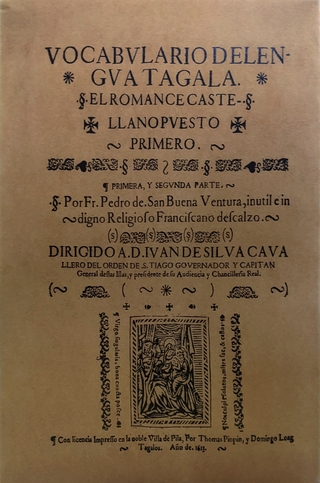
Vocabulario de la lengua tagala was the first dictionary of the Tagalog language in the Philippines, It was written by the Franciscan friar Pedro de San Buena Ventura and published in Pila, Laguna, in 1613. Juan de Plasencia had written a vocabulario earlier but it was not printed. More than a century later, a dictionary of the same name was prepared by Jesuit priests Juan de Noceda and Pedro de Sanlucar; their first edition was published in Manila in 1754 and then the second in 1860, which was reissued by the Komisyon sa Wikang Filipino in 2013.
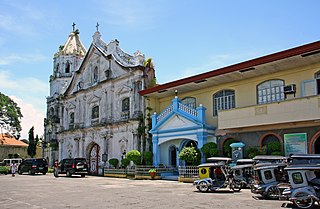
The Saint Dominic Parish Church, also known as Abucay Church, is a 17th-century Baroque Roman Catholic church located at Brgy. Laon, Abucay, Bataan, Philippines. The parish church, established in 1587 and administered by the Dominican Missionary Friars in 1588, is dedicated to Saint Dominic of Guzman. The parish is under the jurisdiction of the Roman Catholic Diocese of Balanga. Since June 5, 2023, its parish priest is Fr. Milver R. Cruz.

